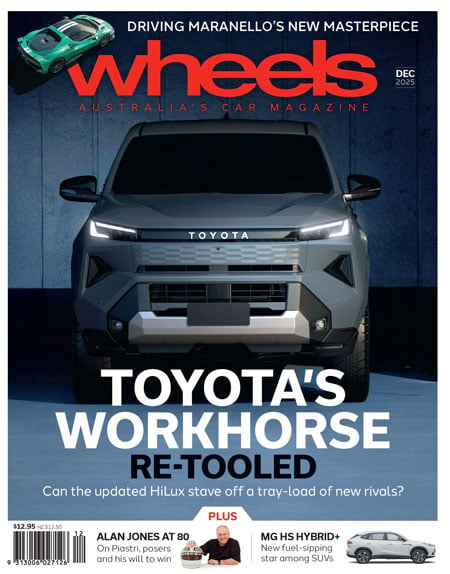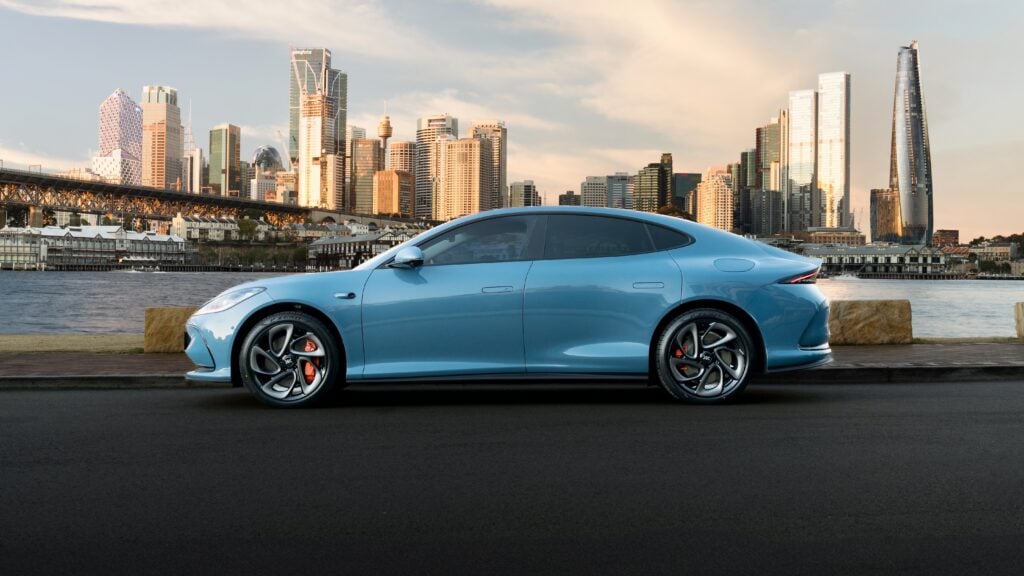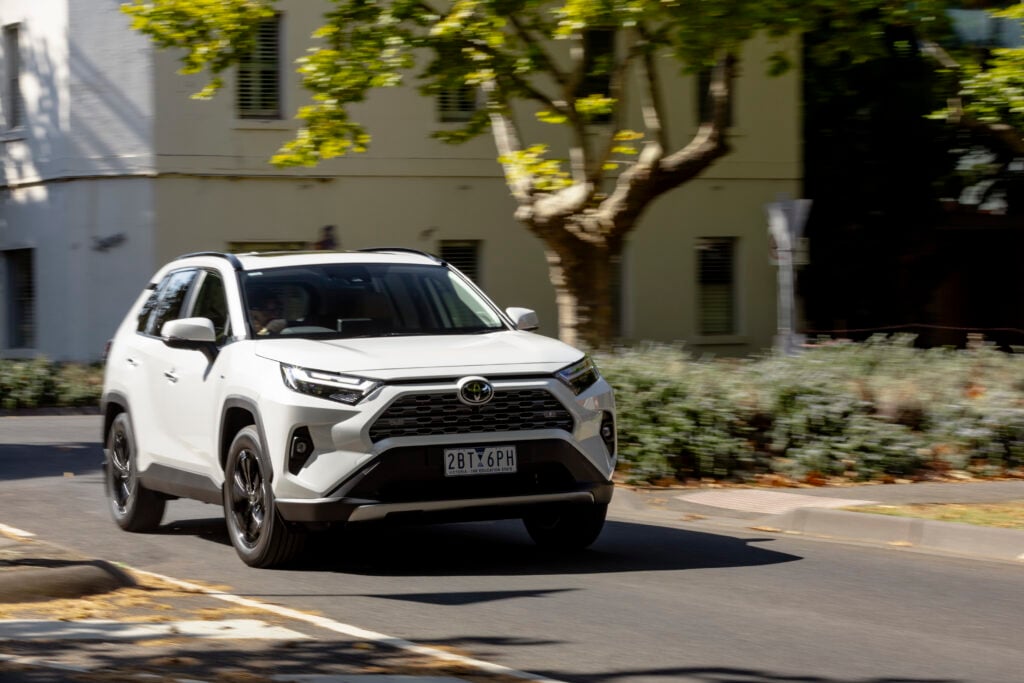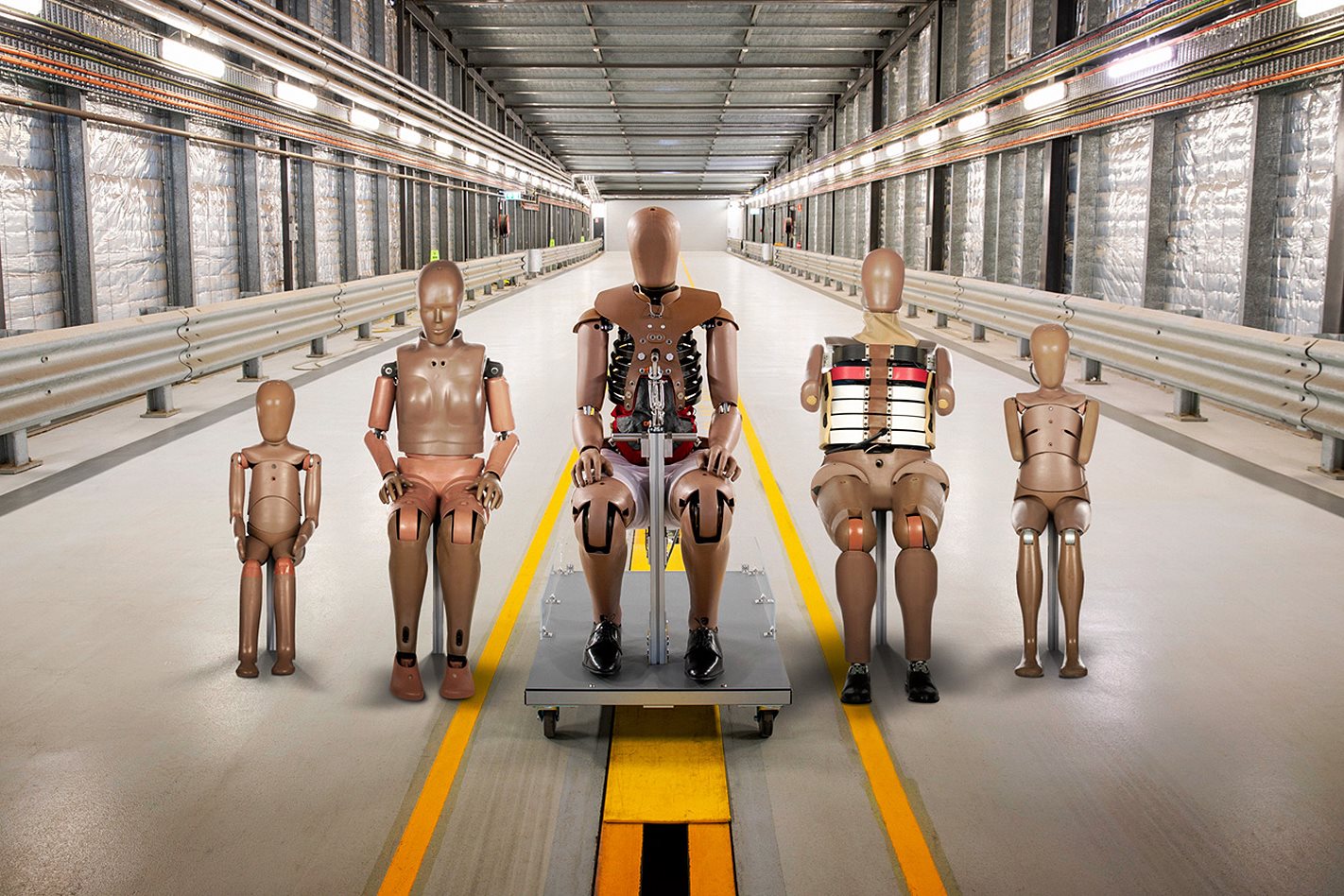
If you’re in the market for a new car, ‘five-star safety rating’ is probably a term you’ve encountered umpteen times. It’s easy to assume all new cars will be relatively safe cars but, as the Ford Mustang, Suzuki Jimmy, and the Jeep Wrangler proved, when it comes to helping you avoid a crash or protecting you and your family in the event of an accident, not all new cars are created equal.
ANCAP has been providing Australasian consumers with independent safety assessments on new cars since 1993 when it simply tested a car’s ability to sustain a frontal collision. Today it’s of the most thorough vehicle testing regimes in the world and provides comprehensive (and downloadable) reports of hundreds of current- and recent-model vehicles.
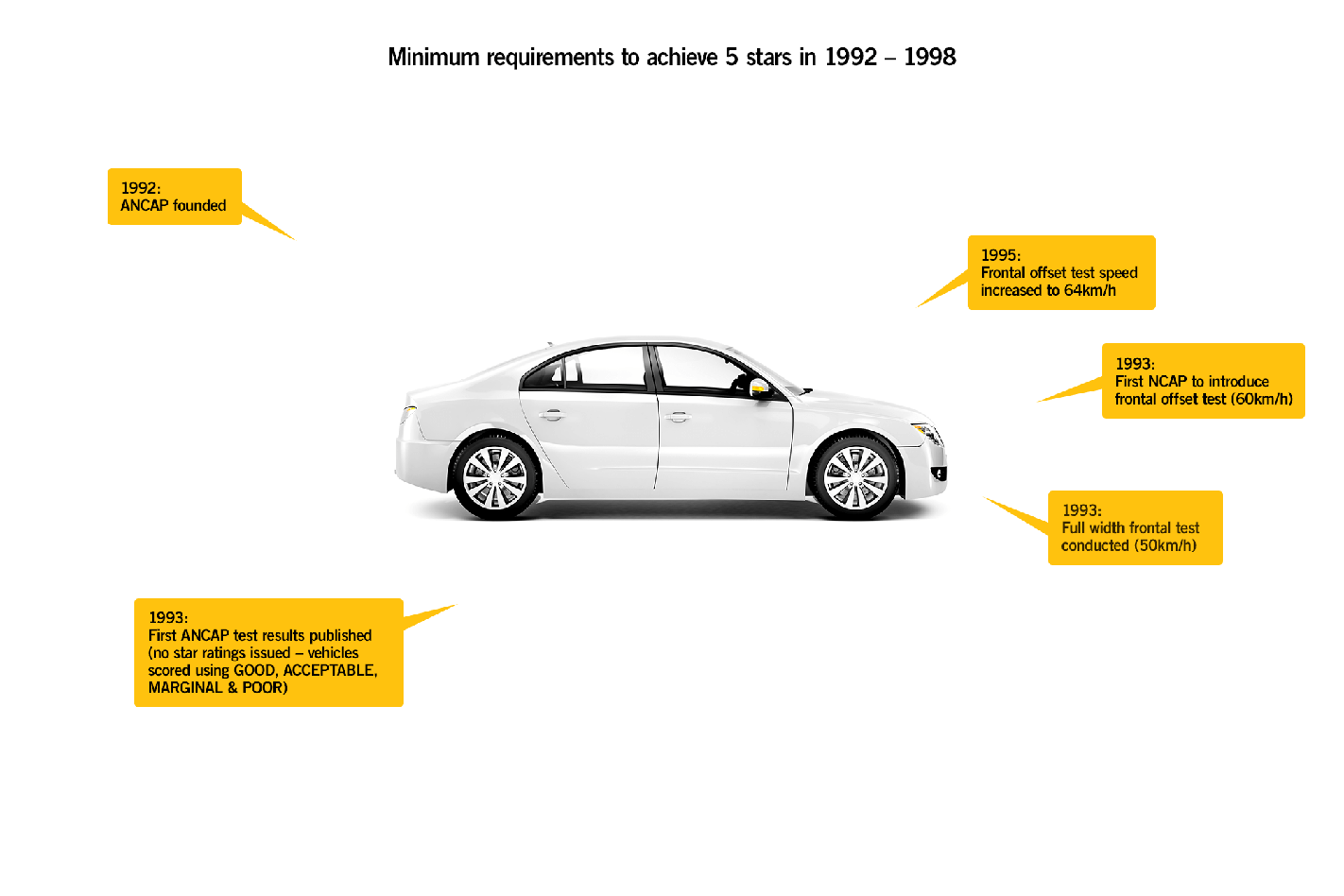
Images courtesy of ANCAP
The program takes a new vehicle and simulates a crash in five common scenarios (see below) before assessing the damage to both the vehicle and the dummy occupants inside.
Electronic safety aids also contribute to the overall score and each vehicle needs to meet or surpass a predetermined minimum score across each category in order to earn the coveted five-star rating.
In 2018 the stakes got even higher for manufacturers, with changes to the Australian testing process in a bid to bring it more in line with the European NCAP scheme.
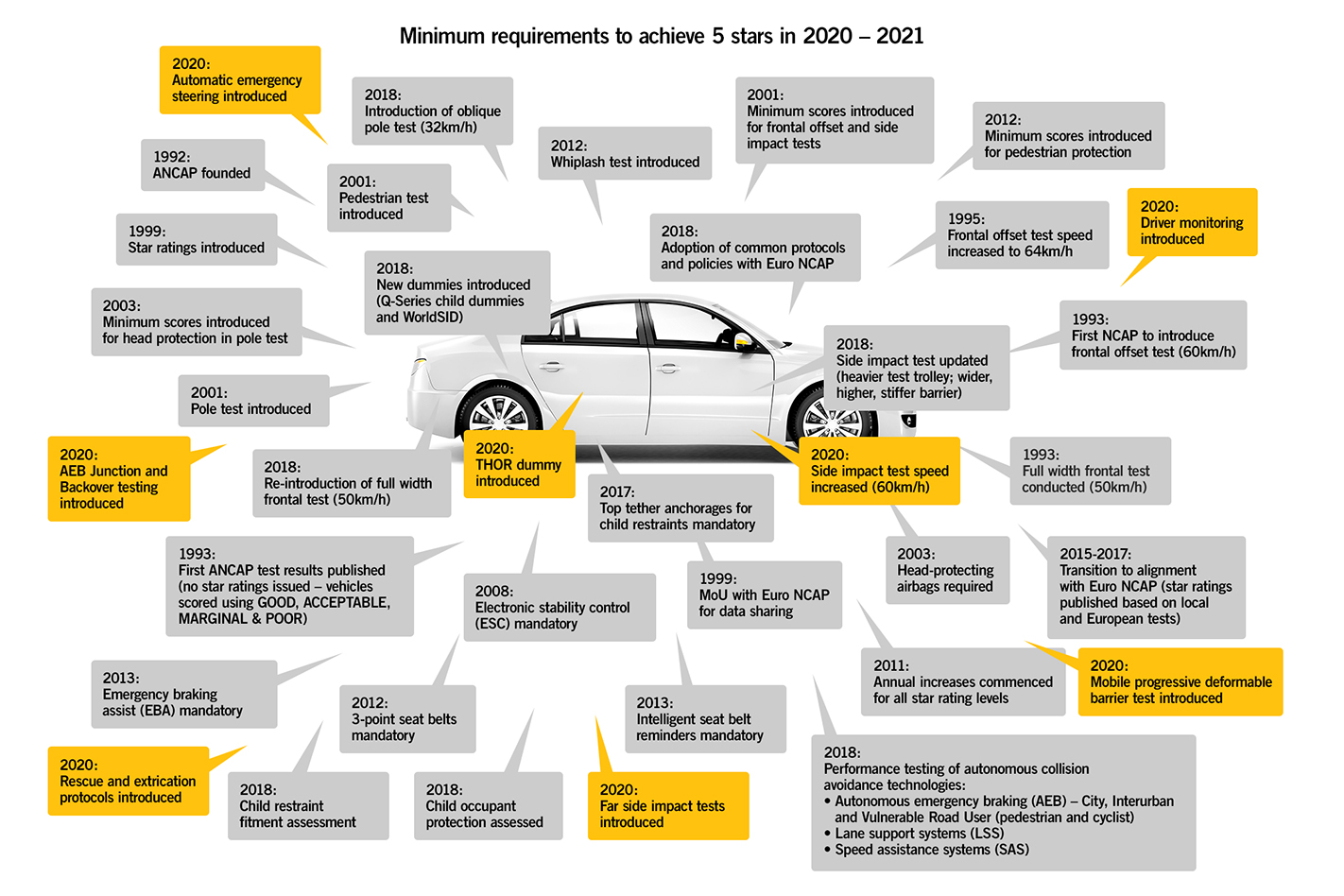
While the two programs are largely similar, the changes introduced a full-frontal crash assessment, while a greater emphasis was placed on a vehicle’s ability to protect kids and its crash-avoidance technology.
The testing regime became even more stringent for 2020 with the more active safety tests, while the side-impact testing speed was increased by 10km/h to 60km/h.
Below is the testing process the vehicle has been subject to in order to assess just how safe it is for you and your family.
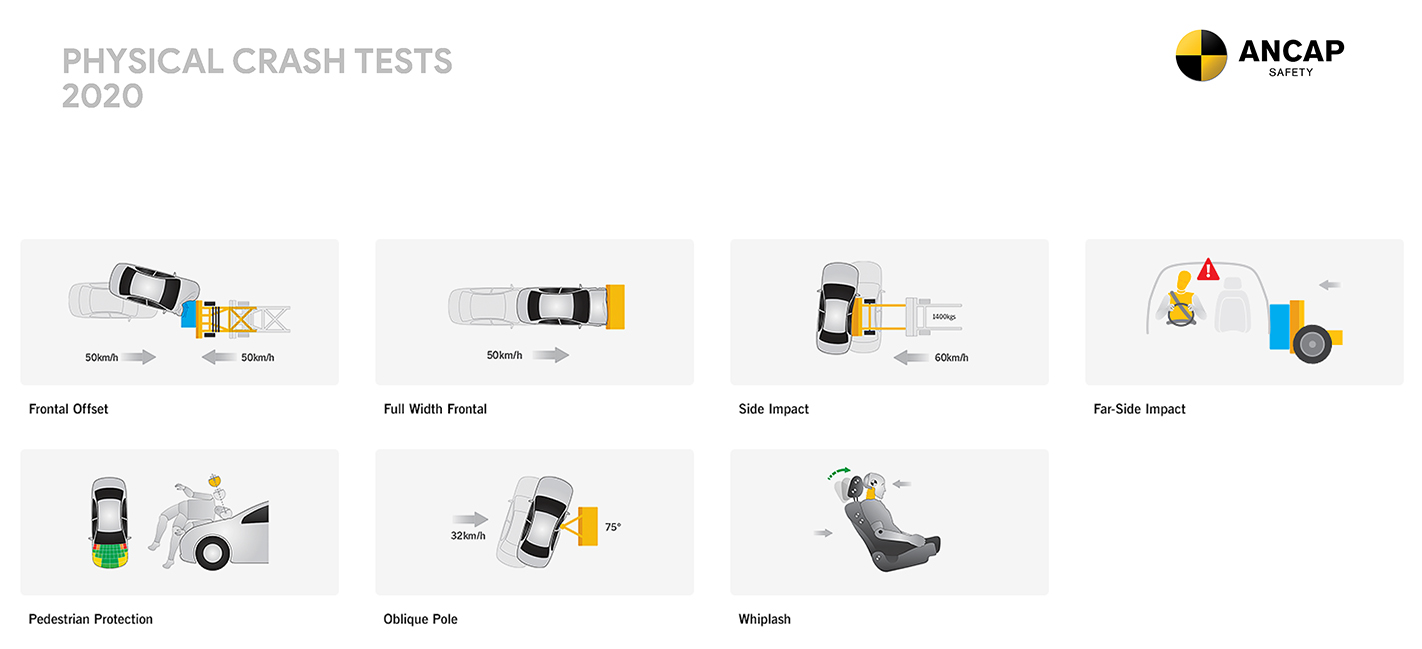
Full-width frontal test
This is conducted at 50km/h and sees the full width of the vehicle hit a solid wall with no deformable element. The vehicle is occupied by two adult female dummies, one in the driver’s seat and on in the rear passenger side.
The test is used to encourage vehicle brands to include enhanced restraints, such as rear-seat tensioners and load-limiters, for rear-seat passengers and smaller statured occupants.
Frontal Offset Test
To mimic the scenario of a head-on style crash, 50 percent of the front of the car is forced into an aluminium barrier at a speed of 50km/h. Both the speed and the behaviour of the 1400kg crushable aluminium barrier simulate a collision of two vehicles travelling at the same speed.
During the simulation, two adult-sized dummies are properly restrained in the two front seats, while two child-sized dummies (a six-year-old and a 10-year old) are appropriately restrained in the rear of the vehicle. Sensors fitted to the dummies’ legs, knees, arms, head and neck all detect and record potential injuries which contribute to the car’s overall score.
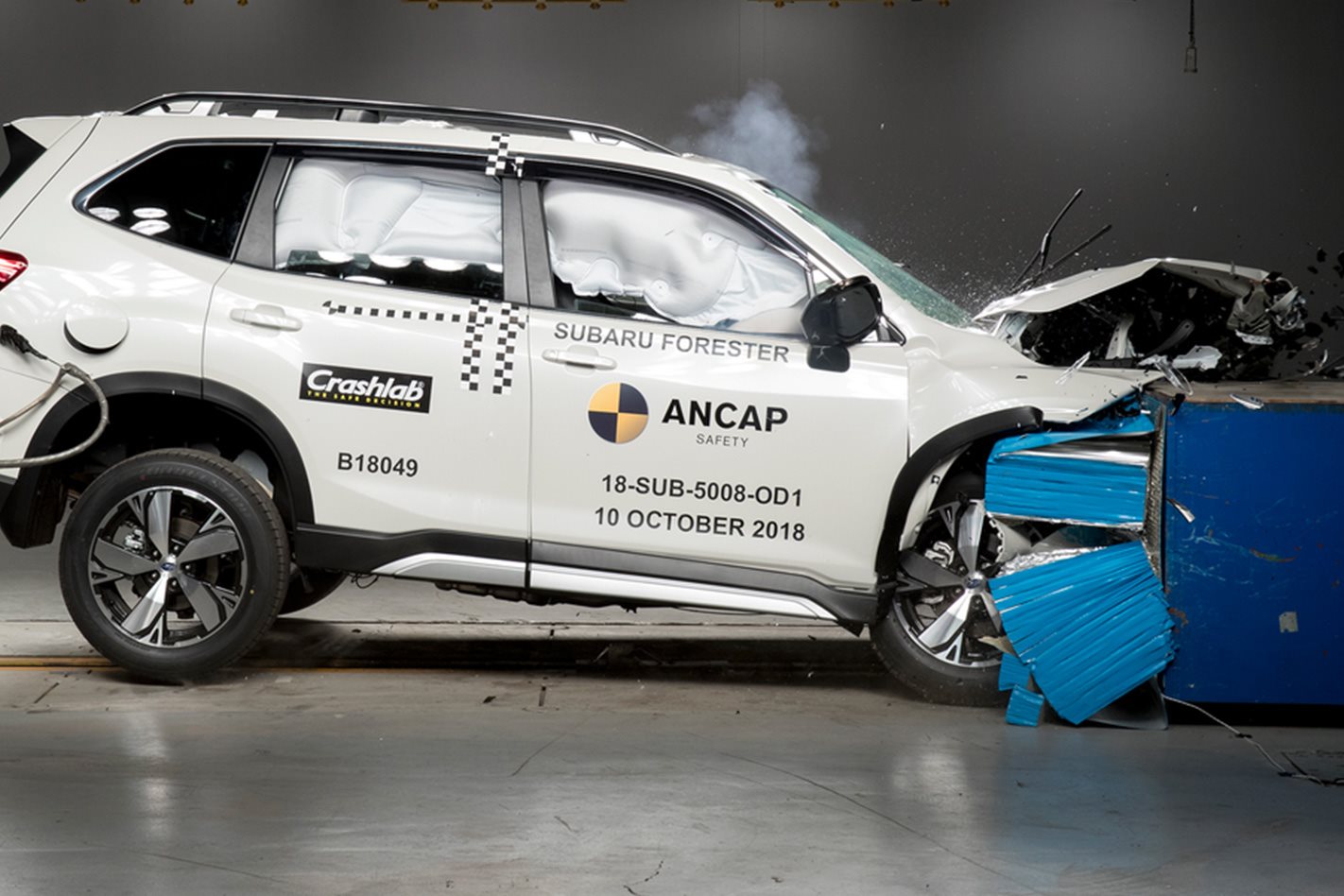
Side Impact Test
As the name suggests, this test is designed to simulate two vehicles colliding at 90 degrees. Often referred to as being ‘t-boned,’ ANCAP’s testers ram a 1400kg trolley into the side of the vehicle being tested, with the impact point using the same crushable-type aluminium to mimic the crumple zone of the front of another car.
The trolley is travelling at a speed of 60km/h at the point of impact and the same four dummies are appropriately restrained within the vehicle.
Pedestrian Protection Test
A significant number of fatal road accidents in Australia and New Zealand are the result of a vehicle hitting a pedestrian. The outer design of the car can greatly influence the severity of injuries in such a scenario so is put through a series of pedestrian tests as part of the ANCAP assessment.
The tests simulate both a child-sized and adult-sized head hitting the vehicle’s bonnet and the subsequent injuries estimated, while the same is done with the simulation of both a child-sized and an adult-sized leg being hit by the leading edge of the vehicle in question. In all scenarios, the vehicle is travelling at a speed of 40km/h.
Oblique Pole test
This test sees the vehicle sliding into a fixed vertical pole at a speed of 32km/h at a 75-degree angle. The pole is narrow to mimic a tree or a telegraph pole and impacts the vehicle on the driver’s side and penetrates the side of the car aligned with the driver’s head.
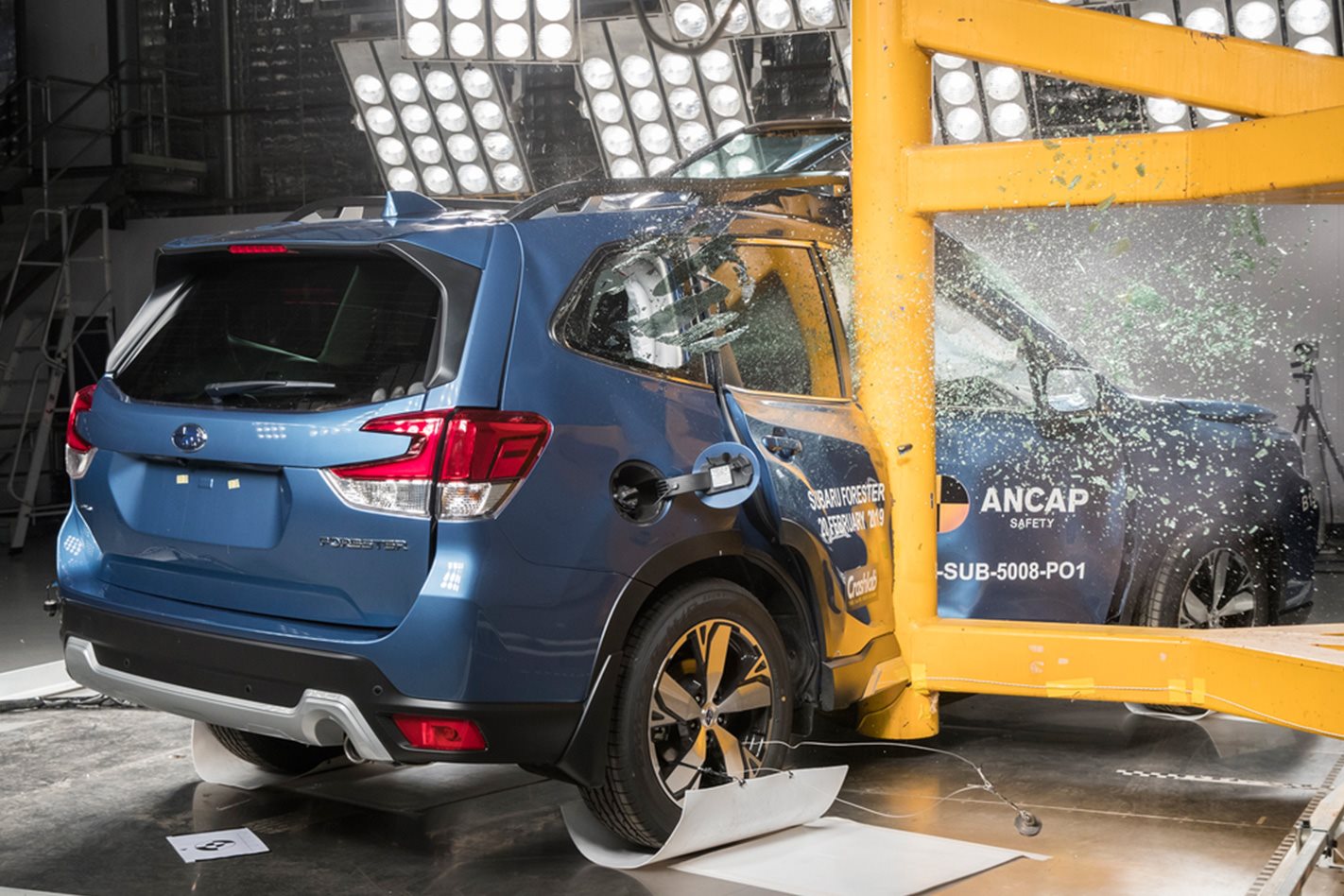
Three accelerometers inside the dummy’s head measure forces experienced by the would-be driver and vehicles fitted with curtain airbags typically score far better in the pole test than vehicles without.
Whiplash Test
Designed to measure the forces experienced by the occupants’ head and neck in the event of being rear-ended, the vehicle’s driver’s seat is removed and mounted to a trolley.
With a properly restrained adult-sized dummy placed in the seat, the trolley is propelled at a force which mimics a stationary car being hit from behind by another vehicle with an average acceleration of 4.9g and 6.4g.
As well as accelerometers mounted inside the dummy’s head, other sensors in the neck measure the bending, shearing and tension forces felt during the impact.
Active safety systems testing
Apart from testing cars to see how they protect occupants and pedestrians during a crash, ANCAP testing now places an emphasis on how the vehicles avoid accidents in the first place.
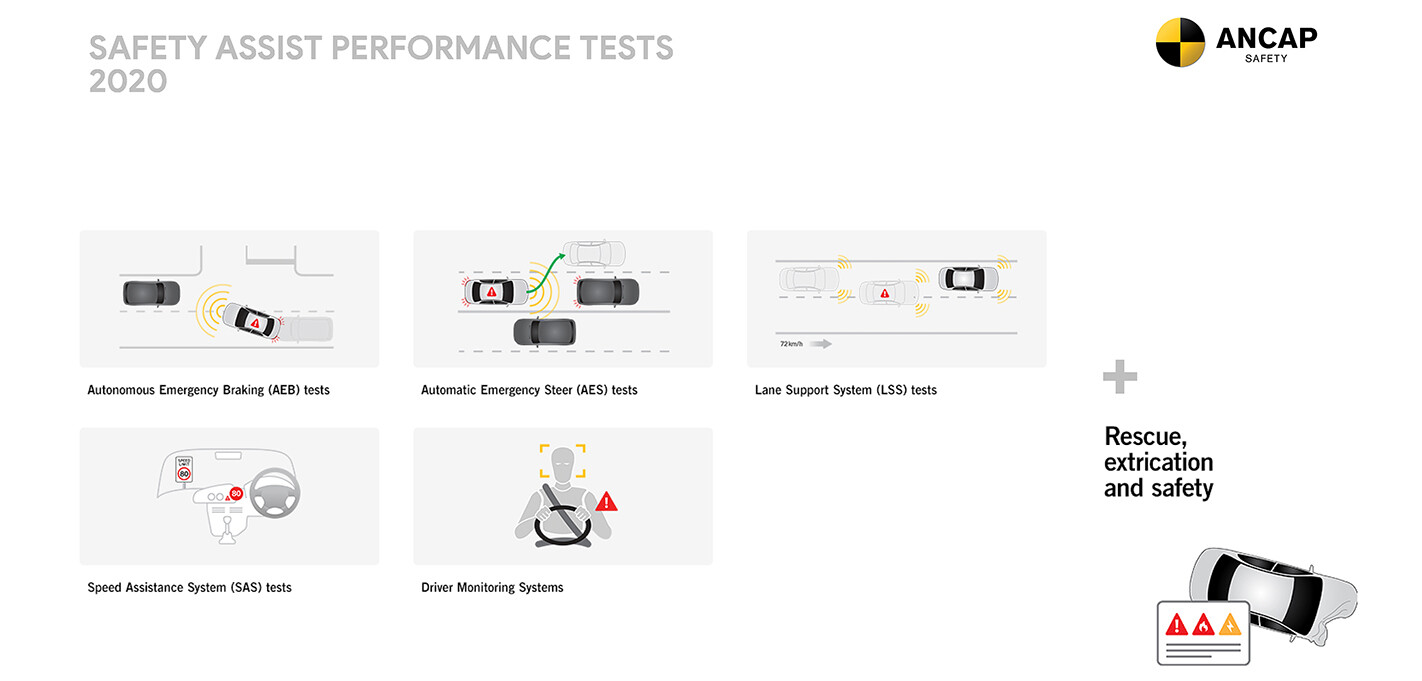
This has seen some newer vehicles missing out on the five-star rating despite having a good crash-protection score because they lack sufficient driver assistance technology such as autonomous emergency braking.
Active safety system tests include:
Autonomous Emergency Braking (AEB) Test
More than 100 different AEB test scenarios are included in ANCAP’s assessment of a vehicle’s ability to autonomously brake at city and highway speeds to avoid collisions with vehicles while stationary, moving or braking.
Vulnerable road users (VRU) such as pedestrians and cyclists are also considered including how they operate during the day and night. In 2020 the testing was extended to include AEB Junction (how a car detects a VRU during a 90-degree turn) and AEB Backover which tests reverse auto-braking systems.
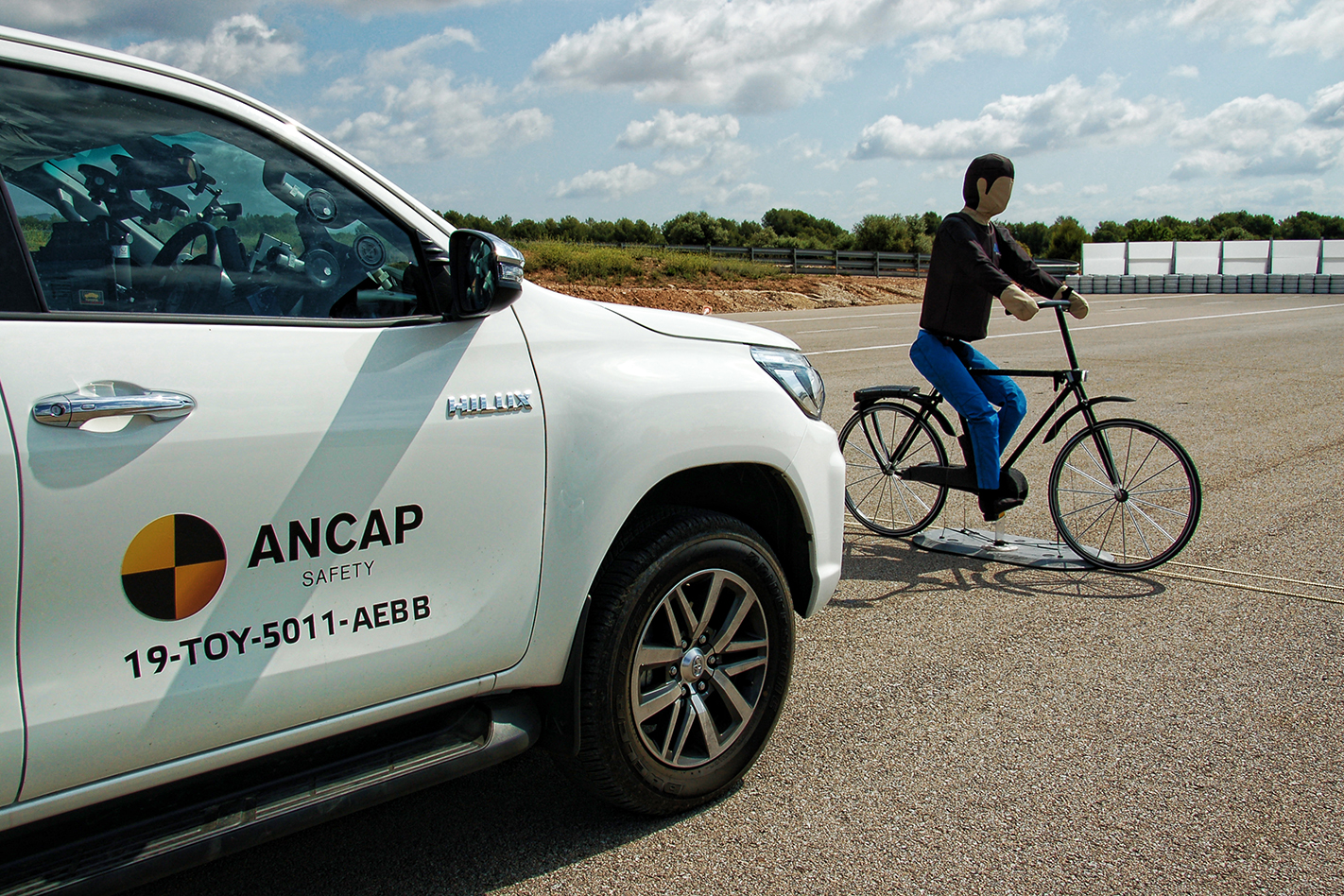
Automatic Emergency Steer (AES) Test
Another test introduced in 2020, this tests a vehicle’s this relatively new technology, which detects a potential collision with a vehicle braking in front and safely steers around it in an adjacent lane.
Lane Support System (LSS) Test
This assesses systems such as Lane Keeping Assist and Emergency Lane Keeping, including their ability to read various line markings to help avoid a run-off-road crash and, where applicable, prevent a collision with an adjacent vehicle or obstacle.
Speed Assistance Systems (SAS) Test
Manual speed limiters, speed-sign recognition and intelligent speed adaption systems are rated by their ability to inform the driver of the present speed limit; warn the driver if the vehicle’s speed exceeds the limit or set speed threshold, and how they actively prevent the vehicle from exceeding a set speed or posted speed limit.
Driver monitoring systems
Vehicles are assessed on their ability to monitor and alert the driver attentiveness or fatigue based on in-vehicle monitoring systems and driver vehicle inputs like steering, braking and acceleration.
